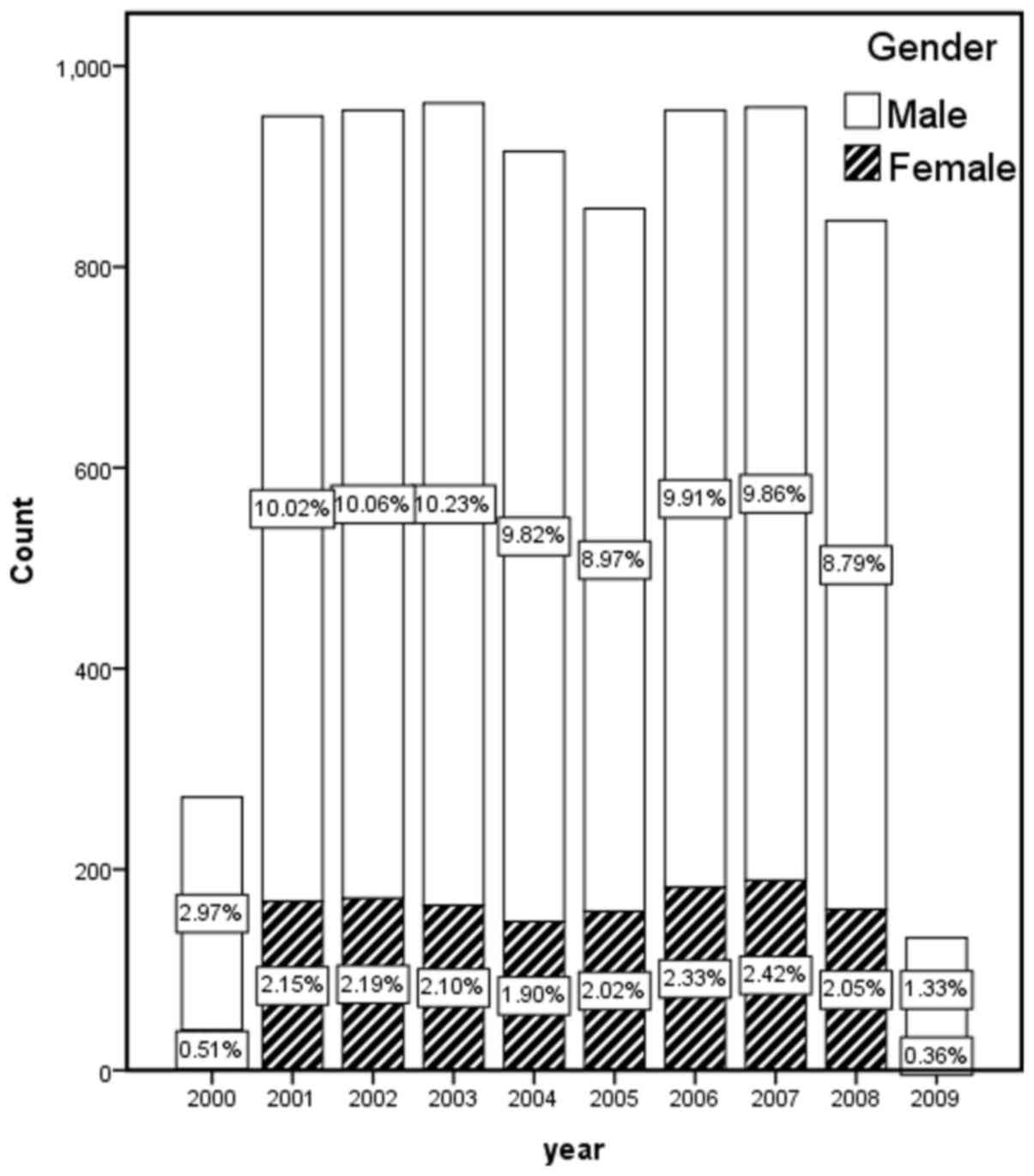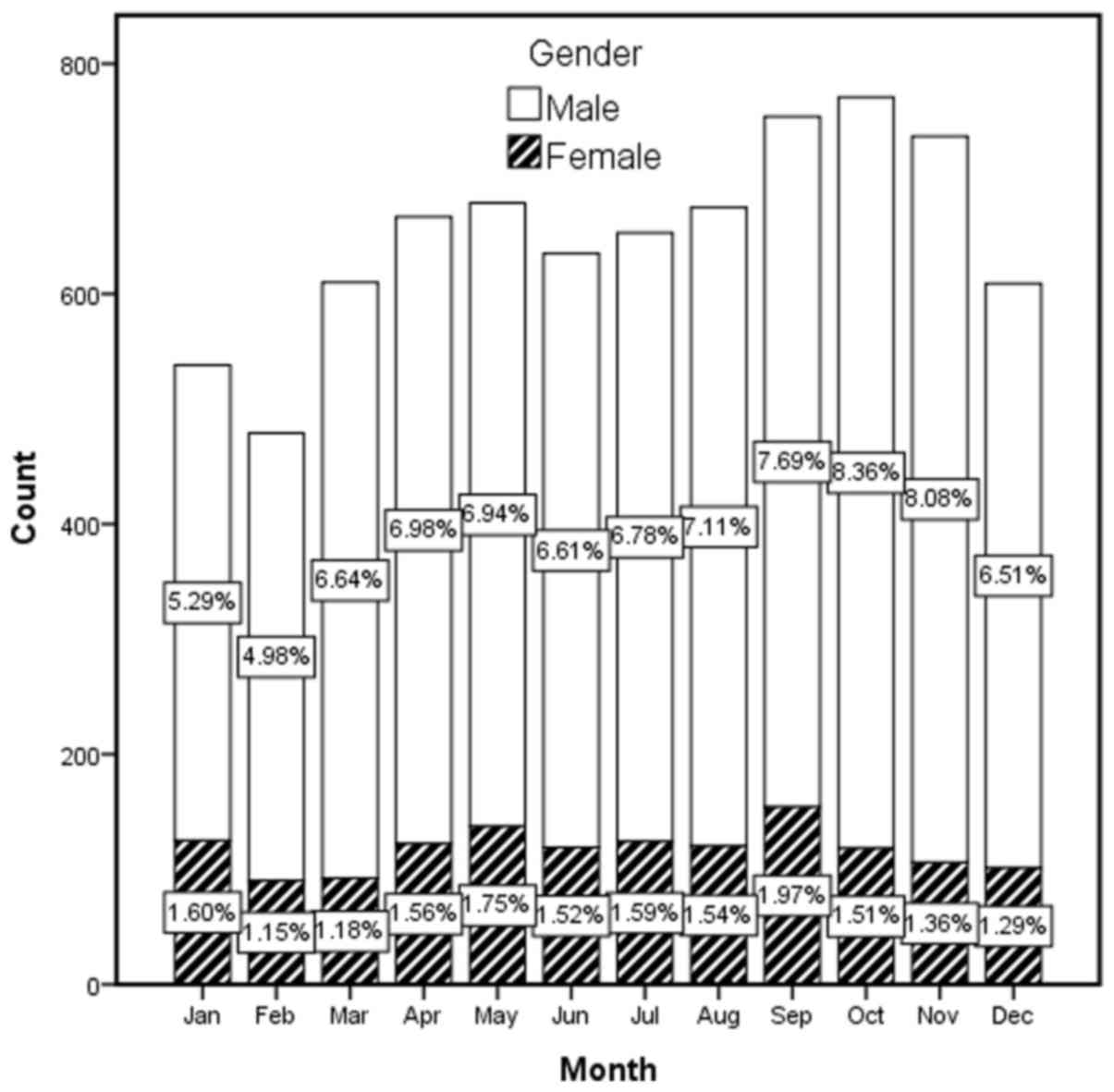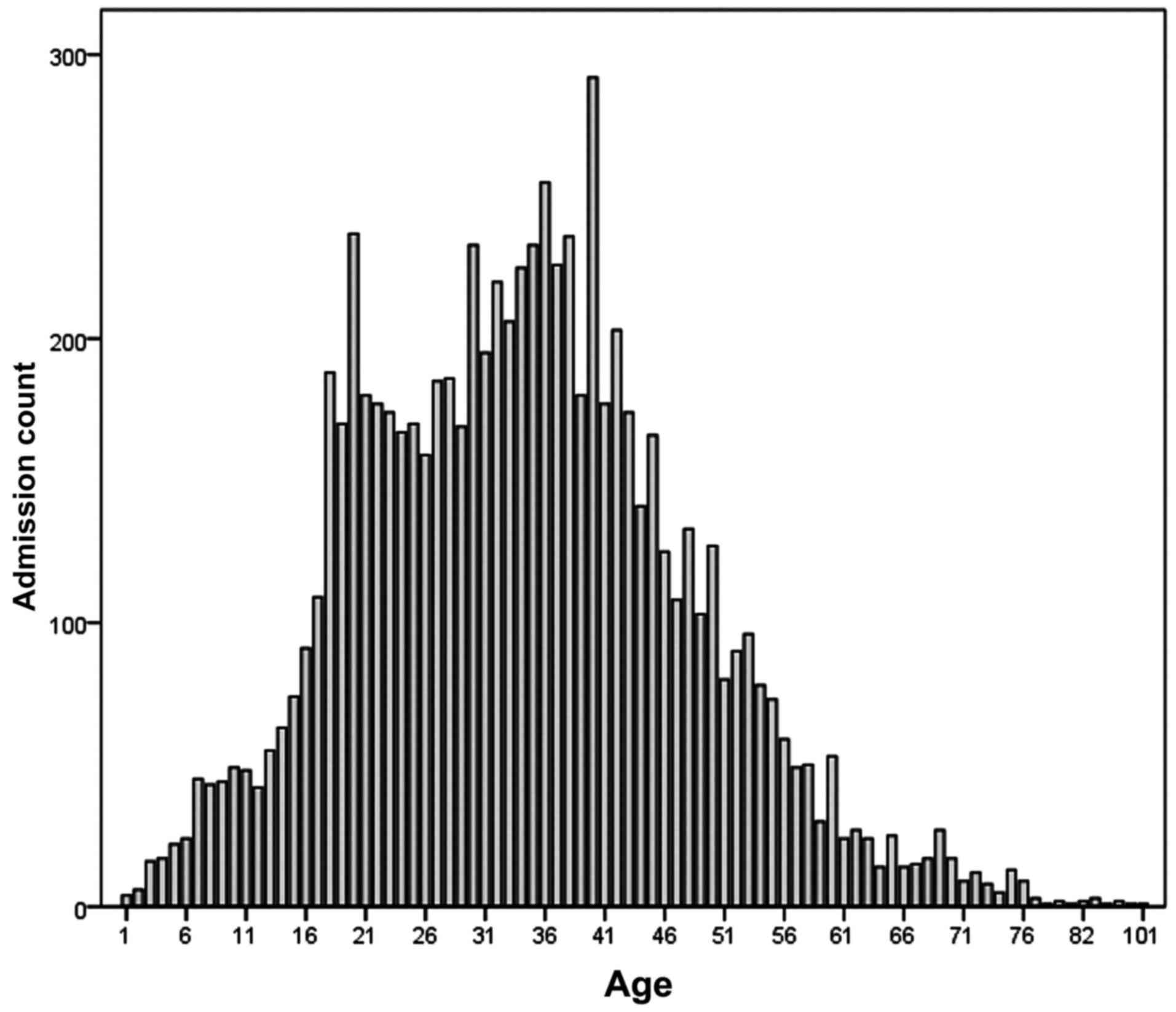|
1
|
World Health Organization: World Health
Statistical. 2011 http://www.who.int/gho/publications/world_health_statistics/EN_WHS2011_Full.pdfAccessed.
November 28–2011.
|
|
2
|
Chiotoroiu AL, Venter DM, Negoi I, Vartosu
C, Plotogea O, Paun S, Vartic M and Beuran M: Splenic implant
assessment in trauma. Chirurgia (Bucur). 109:731–740.
2014.PubMed/NCBI
|
|
3
|
Cirocchi R, Corsi A, Castellani E,
Chiotoroiu AL, Venter DM, Negoi I, Vartosu C, Plotogea O, Paun S,
Vartic M and Beuran M: Case series of non-operative management vs.
operative management of splenic injury after blunt trauma. Ulus
Travma Acil Cerrahi Derg. 20:91–96. 2014. View Article : Google Scholar : PubMed/NCBI
|
|
4
|
Sakran JV, Greer SE, Werlin E and McCunn
M: Care of the injured worldwide: Trauma still the neglected
disease of modern society. Scand J Trauma Resusc Emerg Med.
20:642012. View Article : Google Scholar : PubMed/NCBI
|
|
5
|
Wang SY, Li YH, Chi GB, Xiao SY,
Ozanne-Smith J, Stevenson M and Phillips MR: Injury-related
fatalities in China: An under-recognised public-health problem.
Lancet. 372:1765–1773. 2008. View Article : Google Scholar : PubMed/NCBI
|
|
6
|
Costa G, Tierno SM, Tomassini F, Venturini
L, Frezza B, Cancrini G and Stella F: The epidemiology and clinical
evaluation of abdominal trauma. An analysis of a multidisciplinary
trauma registry. Ann Ital Chir. 81:95–102. 2010.PubMed/NCBI
|
|
7
|
Zhang L, Liu X, Li Y, Liu Y, Liu Z, Lin J,
Shen J, Tang X, Zhang Y and Liang W: Emergency medical rescue
efforts after a major earthquake: Lessons from the 2008 Wenchuan
earthquake. Lancet. 379:853–861. 2012. View Article : Google Scholar : PubMed/NCBI
|
|
8
|
Xu JH, Qiu J, Zhou JH, Zhang L, Yuan DF,
Dai W and Gao ZM: Pediatric burns in military hospitals of China
from 2001 to 2007: A retrospective study. Burns. 40:1780–1788.
2014. View Article : Google Scholar : PubMed/NCBI
|
|
9
|
Moore EE, Cogbill TH, Jurkovich GJ,
Shackford SR, Malangoni MA and Champion HR: Organ injury scaling:
Spleen and liver (1994 revision). J Trauma. 38:323–324. 1995.
View Article : Google Scholar : PubMed/NCBI
|
|
10
|
Hildebrand DR, Ben-Sassi A, Ross NP,
Macvicar R, Frizelle FA and Watson AJ: Modern management of splenic
trauma. BMJ. 348:g18642014. View Article : Google Scholar : PubMed/NCBI
|
|
11
|
Soo KM, Lin TY, Chen CW, Lin YK, Kuo LC,
Wang JY, Lee WC and Lin HL: More becomes less: Management strategy
has definitely changed over the past decade of splenic injury-a
nationwide population-based study. Biomed Res Int. 2015:1249692015.
View Article : Google Scholar : PubMed/NCBI
|
|
12
|
Hazlitt M, Hill JB, Gunter OL and
Guillamondegui OD: Disparities in trauma: The impact of
socioeconomic factors on outcomes following traumatic hollow viscus
injury. J Surg Res. 191:6–11. 2014. View Article : Google Scholar : PubMed/NCBI
|
|
13
|
Greene WR, Oyetunji TA, Bowers U, Haider
AH, Mellman TA, Cornwell EE, Siram SM and Chang DC: Insurance
status is a potent predictor of outcomes in both blunt and
penetrating trauma. Am J Surg. 199:554–557. 2010. View Article : Google Scholar : PubMed/NCBI
|
|
14
|
Singer DB: Postsplenectomy sepsis.
Perspect Pediatr Pathol. 1:285–311. 1973.PubMed/NCBI
|
|
15
|
Davies DA, Pearl RH, Ein SH, Langer JC and
Wales PW: Management of blunt splenic injury in children: Evolution
of the non-operative approach. J Pediatr Surg. 44:1005–1008. 2009.
View Article : Google Scholar : PubMed/NCBI
|
|
16
|
Hoskins W, Jacob A, Wijeratne S, Campbell
I and Taylor P: Splenic injury admitted to a rural Level 3 trauma
centre: A 10-year audit. Aust J Rural Health. 21:163–169. 2013.
View Article : Google Scholar : PubMed/NCBI
|
|
17
|
Stassen NA, Bhullar I, Cheng JD, Crandall
ML, Friese RS, Guillamondegui OD, Jawa RS, Maung AA, Rohs TJ Jr,
Sangosanya A, et al: Selective nonoperative management of blunt
splenic injury: An Eastern Association for the Surgery of Trauma
practice management guideline. J Trauma Acute Care Surg.
73:S294–S300. 2012. View Article : Google Scholar : PubMed/NCBI
|
|
18
|
Frandon J, Rodiere M, Arvieux C, Vendrell
A, Boussat B, Sengel C, Broux C, Bricault I, Ferretti G and Thony
F: Blunt splenic injury: Are early adverse events related to
trauma, nonoperative management, or surgery? Diagn Interv Radiol.
21:327–333. 2015. View Article : Google Scholar : PubMed/NCBI
|
|
19
|
Cirocchi R, Boselli C, Corsi A, Farinella
E, Listorti C, Trastulli S, Renzi C, Desiderio J, Santoro A, Cagini
L, et al: Is non-operative management safe and effective for all
splenic blunt trauma? A systematic review. Crit Care. 17:R1852013.
View Article : Google Scholar : PubMed/NCBI
|
|
20
|
Cocanour CS: Blunt splenic injury. Curr
Opin Crit Care. 16:575–581. 2010. View Article : Google Scholar : PubMed/NCBI
|
|
21
|
Watson GA, Hoffman MK and Peitzman AB:
Nonoperative management of blunt splenic injury: What is new? Eur J
Trauma Emerg Surg. 41:219–228. 2015. View Article : Google Scholar : PubMed/NCBI
|
|
22
|
Olthof DC, Joosse P, van der Vlies CH, de
Haan RJ and Goslings JC: Prognostic factors for failure of
nonoperative management in adults with blunt splenic injury: A
systematic review. J Trauma Acute Care Surg. 74:546–557. 2013.
View Article : Google Scholar : PubMed/NCBI
|
|
23
|
Rostas J, Cason B, Simmons J, Frotan MA,
Brevard SB and Gonzalez RP: The validity of abdominal examination
in blunt trauma patients with distracting injuries. J Trauma Acute
Care Surg. 78:1095–1101. 2015. View Article : Google Scholar : PubMed/NCBI
|
|
24
|
Peitzman AB: Focus on blunt abdominal
trauma. Eur J Trauma Emerg Surg. 41:2172015. View Article : Google Scholar : PubMed/NCBI
|
|
25
|
Robinson WP III, Ahn J, Stiffler A,
Rutherford EJ, Hurd H, Zarzaur BL, Baker CC, Meyer AA and Rich PB:
Blood transfusion is an independent predictor of increased
mortality in nonoperatively managed blunt hepatic and splenic
injuries. J Trauma. 58:437–445. 2005. View Article : Google Scholar : PubMed/NCBI
|
|
26
|
Aubrey-Bassler FK and Sowers N: 613 cases
of splenic rupture without risk factors or previously diagnosed
disease: A systematic review. BMC Emerg Med. 12:112012. View Article : Google Scholar : PubMed/NCBI
|
|
27
|
Duron VP, Day KM, Steigman SA, Aidlen JT
and Luks FI: Maintaining low transfusion and angioembolization
rates in the age of nonoperative management of pediatric blunt
splenic injury. Am Surg. 80:1159–1163. 2014.PubMed/NCBI
|












